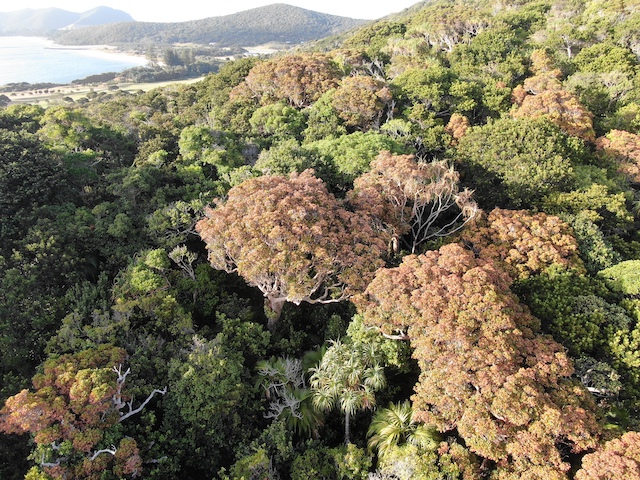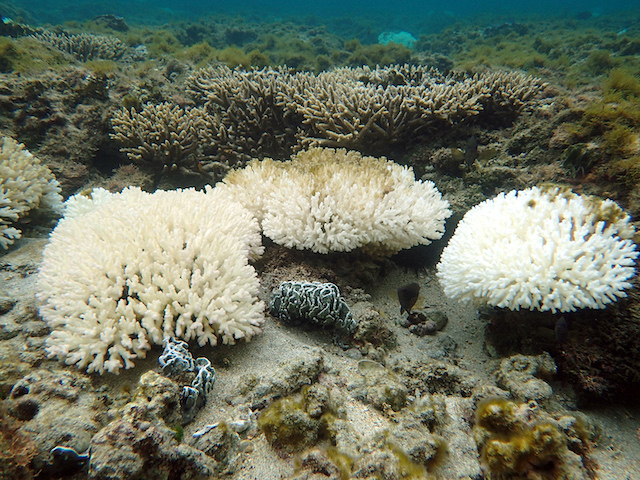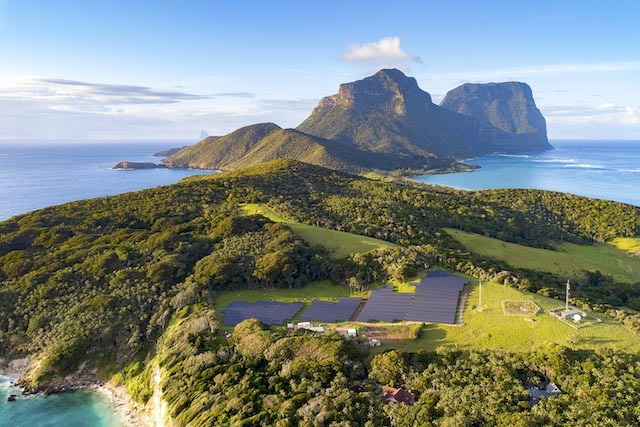In 2019 Lord Howe Island’s unique natural treasures were in peril from climate change. On election day three years on, the threat has grown for the island’s precious mountaintop forests.
The Gnarled Mossy Cloud Forest blankets the two highest peaks of Lord Howe Island, 600km due east from Port Macquarie but part of the Sydney electorate. Shrouded in clouds for most of the year, this forest – roughly the size of Sydney’s Royal Botanic Garden – is home to seven plant species that do not exist anywhere else on the island, nor anywhere else on Earth.
Most of the ferns, palms and flowering shrubs in the forest are endemic to the island, as if seeking refuge from the lowland species introduced by wind and waves over the millennia. The most destructive of these intruders have been rats, which first appeared on the island in 1918 after escaping a sinking ship. The rat population reached over 200,000 and was implicated in the extinction of 18 bird and invertebrate species throughout the island before being eradicated in 2019.
But climate change now looms as a threat to the existence of the entire Gnarled Mossy Cloud Forest ecosystem. Scientists have formulated the term ‘occult precipitation’ to describe the process sustaining this fragile mountaintop community: the condensation of water directly from clouds, invisible to a rain gauge. The Gnarled Mossy Cloud Forest ecosystem depends on the moisture and humidity provided by the clouds covering only 100 metres of the mountain peaks.
This makes the forest highly vulnerable to climate change. Rising temperatures cause the clouds to form at higher altitudes, reducing the exposure of the forest to the life-giving cloud cover. Evidence of declining cloud cover over Mt Gower over the past 50 years is one of the key factors that led to the Gnarled Mossy Cloud Forest being listed as a Critically Endangered Ecological Community under the NSW Biodiversity Conservation Act in 2011.
 Given current trends in mitigating climate change, the prognosis for the Gnarled Mossy Cloud Forest is bleak.
Given current trends in mitigating climate change, the prognosis for the Gnarled Mossy Cloud Forest is bleak.
Professor Tony Auld, Professorial Fellow Centre for Ecosystem Science UNSW, is co-author of the risk assessment report that classified the Gnarled Mossy Cloud Forest as Critically Endangered.
“We might end up with, in 50 years, half the diversity that we’ve got now,” he said. “That’s a best-case scenario. It could be at that level; it could be worse.”
Rising temperatures are also pushing conditions beyond the parameters within which the forest plants have evolved to tolerate. Temperature controls the reproductive cycle of the Little Mountain Palm, with its seeds requiring a cold period to begin sprouting into new seedlings. As the climate warms, temperatures do not cool sufficiently to trigger the seeds into germination.
“So, you’ll get species from lower down pushing them out,” said Auld. “And you’ll have a change to that system, with a reduced number of species that are unique.”
Lord Howe Island did not escape the drought of 2017–2019, which killed trees across the island including in the Gnarled Mossy Cloud Forest canopy. Under the stress of drought, trees form embolisms, bubbles of air blocking the vessels that carry water throughout the plant.
“Once those bubbles form, that’s it,” said Auld. “The tree just dies. We should be worried because we’ve seen an indication of that in some of the [trees] out there.”
Evidence of increased tree mortality in the forest is clear to residents of Lord Howe Island. Scientist Ian Hutton has lived on the island since 1980, receiving an honorary doctorate from Southern Cross University for his conservation work and research on the Lord Howe Island environment. Hutton was heavily involved with the rat eradication project.
“The threats to the Gnarled Mossy Cloud Forest were rats and climate change,” he said. “Well, we got rid of the rats in 2019. But climate change is still a threat.”
Hutton is a daily witness to the effects of climate change on the island, observing and photographing the drying canopy and dying trees. “Looking at some of the hillsides here you can see the skeletons of those dead trees amongst the green canopy,” he said.

The conservationist funds his research providing guided tours of Lord Howe Island through his company, Lord Howe Island Nature Tours. The tourism industry on the island is roaring back to life after the pandemic, with tourists denied international travel seeing Lord Howe Island as an exotic alternative. Hutton’s tours are booked through to 2023, with tour operators throughout the island experiencing similarly high demand.
“Demand is really, really high,” said Sarah Shields of the Lord Howe Island Tourism Association. “It’s a real nature destination. You can go and have a good adventure, but it’s also quite safe.”
With the Lord Howe Island Tourism Association working towards Ecotourism Certification from Ecotourism Australia, the island is set to build on its reputation as a destination of choice for the environmentally conscious traveller seeking to minimise their impact on the environment.
“COVID has given people a chance to pause and reflect, and ask ‘What do I want from a holiday?’,” Shields said. “Maybe it’s not getting a cheap flight to Bali; maybe it’s doing something a bit more meaningful where I can go and have a positive impact.”
The Lord Howe Island Board has recently completed its Hybrid Renewable Energy Project, including a solar farm of over 3,000 solar panels with battery storage. The initiative is helping to reduce the island’s reliance on diesel generators and imported fossil fuels.
Shields said the inner-city ‘teal’ independents gave the issue of climate change some prominence at the beginning of this election campaign. But other issues raised by the major parties have drowned out this concern as the campaign nears its conclusion.
“I think we started off having a conversation around climate change, especially regarding the teal revolution and the rise of the independents,” said Shields. “Now that it’s coming to its final days, it seems the major parties are just talking about living costs.
“I don’t see climate change as being a big part of what they’re talking about at all. If real change is going to happen, it will be led by the influence of independents in parliament.”
As a scientist and small business owner, Hutton shares this view. He has a keen awareness of the consequences of inaction on climate change, and said not enough attention has been paid to this urgency through the election campaign.
“For some reason, the [Coalition] government is reluctant to go down that path,” he said. “And the Labor party, while they probably would like to, are a bit frightened to speak too loudly for fear of voter backlash.”

Concerns about the economic cost of the transition to renewables needed to drive down emissions are dwarfed by the costs of inaction, Hutton said.
“There’s not enough focus on what is going to be the cost if we don’t do anything,” he said. “The cost to the community in terms of infrastructure, people’s mental health, people’s well-being and food production – this is going to be of great concern.”
With more than 50 per cent of Lord Howe Island residents employed in tourism-related industries, the risks the changing natural environment poses for the local economy are clear.
For Hutton, the costs of inaction are almost unspeakable: “Governments should be putting it out there more. If we don’t do something, the costs are going to be horrific.”
Auld said he agrees with the scale of the threat and the need for urgent action.
“There are people who go to the top of the mountain on guided tours,” he said. “It’s a really great walk; a lovely experience. You go through a whole change of environmental systems up to the top of this beautiful mountain with an amazing view. You don’t want to see that compromised by a lack of action.
“If you take the purely economic argument, many studies have shown that the costs of not doing enough outweighs the cost of doing anything. That argument is not discussed enough.”


